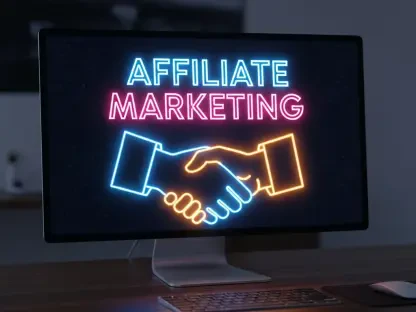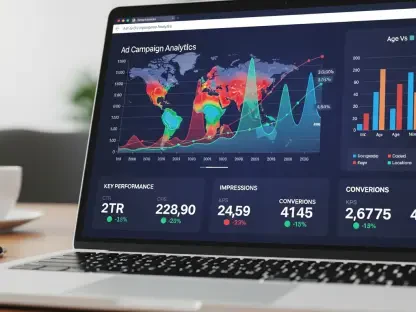In the rapidly evolving world of digital marketing, Anastasia Braitsik stands out as a leader in SEO, content marketing, and data analytics. Her expertise provides valuable insights into the burgeoning field of agentic AI and its potential impact on the programmatic advertising industry. Today, we delve into how this advanced AI might reshape traditional demand-side platform (DSP) business models, potentially disrupting established norms and redefining roles within the advertising ecosystem.
Can you explain what “agentic AI” is and how it differs from traditional AI in the context of programmatic advertising?
Agentic AI represents a significant departure from traditional AI. Unlike models that primarily offer analysis or recommendations, agentic AI proactively manages tasks such as campaign setup, targeting, and optimization. In programmatic advertising, this means AI systems can operate autonomously across different advertising channels, potentially bypassing the central role typically played by DSPs.
How does agentic AI pose a threat to the established demand-side platform (DSP) business models?
Agentic AI questions the necessity of current DSP models by offering direct, decentralized solutions that optimize ad spend efficiency. The traditional DSP, a complex nexus of data integration and transaction processing, could become redundant if AI-driven strategies prove more adept at handling real-time decisions without the overhead of centralized control.
What are the current core functions of DSPs that agentic AI could potentially disrupt or eliminate?
Agentic AI has the potential to outperform human capabilities in tasks like campaign setup, audience targeting, and bid management. These functions, typically requiring intricate problem-solving and pattern recognition—areas where AI excels—could see a paradigm shift, possibly reducing DSPs to roles that require less technical processing, like creative management.
Why do you believe that AI will soon surpass human capabilities in tasks like campaign setup and targeting?
AI’s edge lies in its ability to process vast data sets with speed and precision. Human-led processes, although nuanced, can’t match the velocity at which AI can make data-driven decisions. The technology continues to evolve, bolstered by machine learning algorithms that refine targeting and optimize ad spend beyond what manual processes can achieve.
Can you elaborate on the transparency issues currently affecting the programmatic advertising supply chain?
Transparency—or the lack of it—remains a pressing concern in programmatic advertising. Studies indicate a significant portion of ad dollars doesn’t reach publishers, instead, dissipating in complex intermediary systems. This financial leakage highlights the opacity within the supply chain, a flaw that agentic AI could either exacerbate by further automating processes or alleviate through more direct and efficient pathways.
How does Microsoft’s decision to close the Xandr DSP reflect the broader industry shift towards AI-driven solutions?
Microsoft’s pivot from traditional DSPs underscores a significant trend toward conversational, personalized, AI-driven solutions. This move suggests an alignment with industry forecasts that increasingly favor automation and direct AI integrations, marking a departure from the centralized control model that DSPs traditionally represent.
In what ways do you think the rise of agentic AI aligns with the trend of increasing automation in digital advertising?
The rise of agentic AI is a natural extension of the broader automation trend within digital advertising. As automation becomes more sophisticated, it allows for seamless ad transactions across platforms, reducing human intervention to strategic oversight rather than operational control—a dynamic shift toward efficiency and scalability.
What are the financial implications of transparency issues, such as the reported financial leakage where a significant percentage of advertising dollars don’t reach publishers?
The financial leakage in the ad supply chain has profound economic repercussions, eroding trust and diminishing returns on ad spend. Advertisers face significant discrepancies between what they pay and what publishers receive, often due to high intermediary fees. This inefficiency calls for solutions that improve transparency and ensure more of the ad dollar directly supports content creation and distribution.
How does header bidding contribute to the fragmentation of the programmatic advertising market?
Header bidding, while leveling the playing field by providing simultaneous inventory access to multiple ad exchanges, also prompted market fragmentation. This practice nullified the exclusivity DSPs enjoyed, leading to a decentralized landscape where supply-side platforms expanded their roles, coordinating data and audience targeting directly, hence complicating the previously linear supply framework.
What role does programmatic curation play in modern DSP operations, and how might it be affected by advances in AI?
Programmatic curation involves strategically packaging and optimizing ad inventory with human insight, complemented by data analytics. As AI advances, the curation model could evolve, leveraging AI’s precision in data processing while integrating human nuance in strategic decision-making, potentially enhancing targeting and contextual relevance in campaigns.
How do current fee structures within DSPs impact auction outcomes and campaign performance?
Fee structures directly influence who wins ad auctions—different models can alter final costs significantly, affecting campaign viability. A DSP’s fee approach can determine how much of a bid reaches the publisher, impacting win rates and pricing dynamics. More transparent and competitive fee structures could reduce inefficiencies and improve advertiser ROI.
Could you discuss the potential reduction in supply chain visibility that agentic AI might cause and its effects on advertisers?
By nature, agentic AI could obscure layers in the supply chain, providing less insight into fee distribution and ad placements. If advertisers can’t trace how their budget is allocated, strategic planning may suffer, as detailed understanding of ad ecosystems is crucial for optimizing performance and budget allocation.
Are there specific DSP functions that you believe will remain more resistant to AI disruption?
Functions like creative management and nuanced strategic decision-making might remain more resistant to AI disruption. These areas often require human creativity and insight, which currently, AI struggles to replicate fully. Yet, within quantitative domains like targeting or optimization, AI continues to challenge human capabilities.
How might the programmatic advertising industry maintain a balance between automation and transparency in the wake of these advancements?
Striking a balance involves integrating transparent, accountable AI frameworks that ensure visibility while leveraging AI’s operational efficiencies. This means adopting systems where advertisers can monitor AI decisions, maintaining insight into how campaigns are managed and budgets spent, thus ensuring responsible automation.
What challenges do you foresee in implementing agentic AI solutions at scale within the programmatic advertising ecosystem?
Challenges in scaling agentic AI include infrastructure requirements, data privacy regulations, and ensuring brand safety. Meeting these standards requires robust systems and the willingness of industry players to embrace and trust new technologies, which may disrupt established processes and demand substantial investment.
How should advertisers adjust their strategies and operations in response to the potential rise of agentic AI?
Advertisers should focus on integrating AI-friendly strategies, emphasizing data literacy, and fostering flexibility in campaign design. Cultivating partnerships with technology providers can ensure smoother transitions and help maintain competitive advantages in an automated landscape.
Can you touch upon the importance of cross-media measurement and its relation to the traditional focus on single-channel optimization?
Cross-media measurement allows advertisers to assess performance across various platforms, providing a holistic view that goes beyond single-channel metrics. This comprehensive approach is crucial in a fragmented market, ensuring that campaigns are efficient and outcomes are optimized across all touchpoints, rather than in isolated segments.
How do privacy concerns influence the adoption of agentic AI over conventional DSP models?
Privacy concerns could accelerate agentic AI adoption, as these systems often require less extensive data-sharing, mitigating data security risks. The distributed nature of AI can offer privacy-centric solutions, possibly increasing their appeal over traditional models that necessitate complex data exchanges.
Can you discuss any evidence or indicators that suggest brands are starting to purchase programmatic advertising without the involvement of DSPs?
There’s emerging evidence of brands experimenting with AI solutions that bypass DSPs, favoring direct transactions. This trend shows the industry’s exploratory phase with AI, seeking efficient pathways that integrate seamlessly into diverse media environments without intermediary costs.
What would a shift towards AI-driven automation mean for human competency and strategic control in advertising?
AI-driven automation challenges human competency by altering roles—shifting from tactical execution to strategic oversight and innovation. As AI handles routine tasks, practitioners may need to develop new skills, focusing on strategic insight and human-centric creative processes that AI cannot replicate.
How might the landscape change for traditional media buying services if agentic AI begins to manage campaigns across several channels?
If agentic AI manages multi-channel campaigns effectively, traditional media buying services might pivot toward offering strategic planning and high-level campaign ideation rather than execution. Their role could evolve to focus more on creative development and long-term brand strategy while AI handles the mechanical aspects of media buying.
What are the potential scenarios for DSP evolution in light of these AI advancements?
DSPs might evolve by either incorporating AI capabilities, redefining their roles to focus on strategic oversight, or fragmenting into specialized services collaborating with AI. As AI agents handle core functions, DSPs might need to emphasize legacy strengths like fraud detection or data integration to maintain relevance.
Can you comment on the philosophical debate surrounding human versus AI control in advertising decision-making processes?
The philosophical debate centers on the balance of efficiency versus agency. While AI can streamline processes, over-reliance might erode human expertise and decision-making authority. It raises essential questions about maintaining human oversight to ensure creativity and strategic depth aren’t sacrificed in pursuit of automation.
Do you have any advice for our readers?
Embrace change but maintain a critical perspective. Explore AI’s potential while ensuring your strategic capabilities grow alongside technological advancements. Cultivate a balance where technology enhances your strategic insights rather than overshadowing them, ensuring a comprehensive approach to future challenges in advertising.









